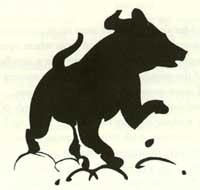|
· Access allowed on-leash · Free-running (off-leash) areas · Banning · Different zones within the same park · Time-share arrangements No single approach will serve an entire community. An agency must identify which of these five methods (or combination) is appropriate and apply them to the design of their open spaces where pets are allowed. Design Those responsible for designing space for pets and pet owners must take the needs of this group into consideration. Parks naturally offer many things of importance to pet owners. Other features may need to be added. Agencies across the country have used some or all of the items listed below to enhance their open spaces for pet owners. Each park manager must decide which will best serve his or her community. Items Occurring Naturally in Parks · Wide-open spaces with varying terrain for a variety of pet fitness opportunities · A diversity of social interactions with other pets and pet owners of all shapes and sizes · Shade for cooling off · Walking/fitness paths Items the Agency Might Add · A source for drinking water · Bags for the removal of pet feces and places to dispose of the bags · Fencing (specifically for off-leash pet areas) · Seating areas for pet owners · Informational signage · Shelter from the weather · Agility obstacles for pets · Parking · Lighting |
Site Selection Pet areas are similar to any other facility in that the selection of a location or locations is essential to their success. With the assistance of local pet enthusiasts an agency can identify the criteria for selecting a location. Here are some examples of the criterion used by other agencies when selecting a site: · lightly used land with no designated use (such as utility rights-of-way and linear parks); · land with enough acreage to support the needs of pet owners and non-pet owners; · land with nearby accessible parking or space for future parking construction; · land far enough from residences to avoid a possible noise nuisance; and · land with mostly turf and some natural shade. Again, your agency must incorporate public opinion when selecting a site. The acceptance of a designated pet area is much more likely when the concerns of the public are addressed. Also, the pet owners in your community know what potential problems will be encountered and can assist you in preventing them. Problems and Solutions Problem: Overcrowding Overcrowding in a designated pet area can lead to increases in the number of dog fights (and people fights), likelihood of pet disease transmittal, wear and tear on the area, and maintenance issues. Some solutions:  Also, an agency must be able to identify when there is an overcrowding problem and respond accordingly. Enlarging existing space, modifying ordinances, and developing additional space in other parks are all possibilities one must consider when searching for solutions. An area constantly overrun with foot and paw traffic will create a negative environmental impact and therefore defeat the original purpose of pet area development. Problem: Pet feces Pet feces is a problem encountered by park managers in many different situations. Pet feces left by uncaring pet owners is not only disgusting to look at, smell, step in, etceteras, it also poses a very real health |
Pages:|1 ||2 | |3 ||4 | |5 ||6 | |7 ||8 | |9 ||10 | Pages:|11 ||12 | |13 ||14 | |15 ||16 | |17 ||18 | |19 ||20 |
Pages:|21 ||22 | |23 ||24 | |25 ||26 | |27 ||28 | |28a ||28b| |28c ||28d| |29 ||30 |
Pages:|31 ||32 | |33 ||34 | |35 ||36 | |37 ||38 | |39 ||40 |
Pages:|41 ||42 | |43 ||44 | |45 ||46 | |47 ||48 | |49 ||50 | Pages:|51 ||52 | |53 ||54 | |55 ||56 |